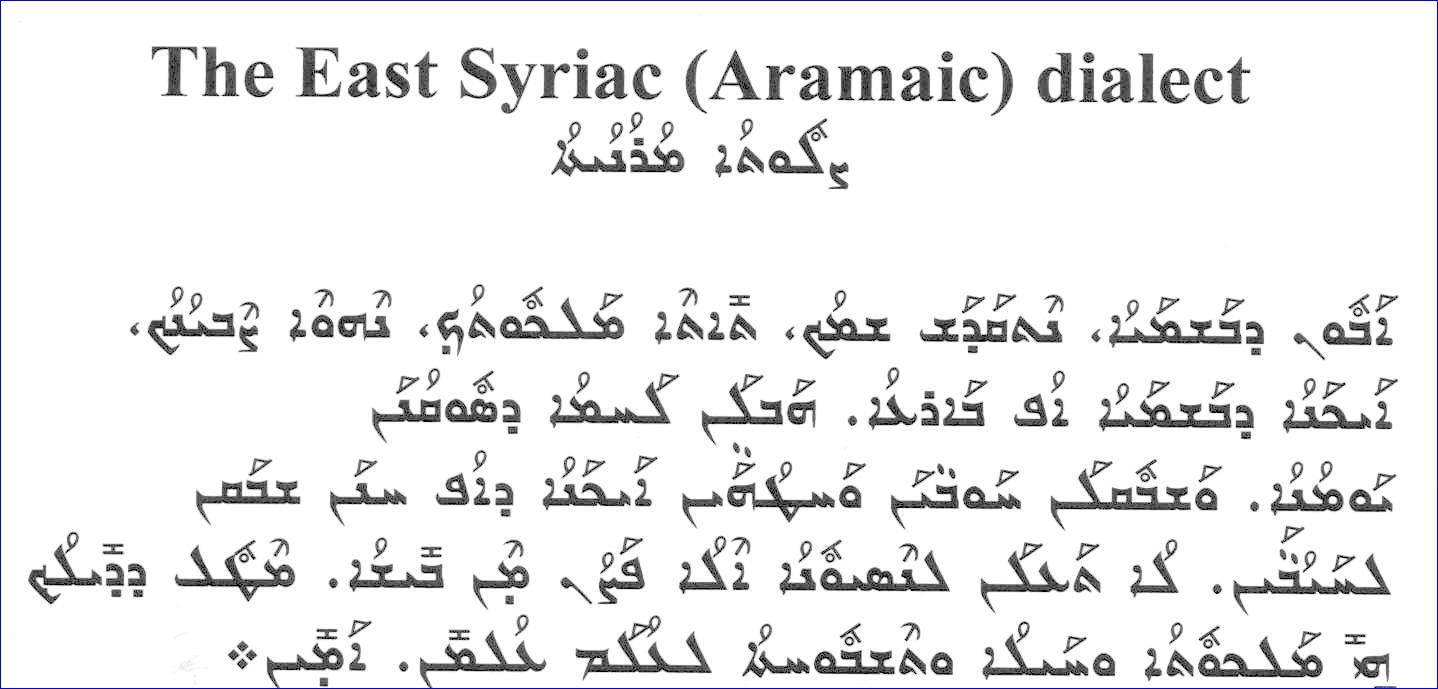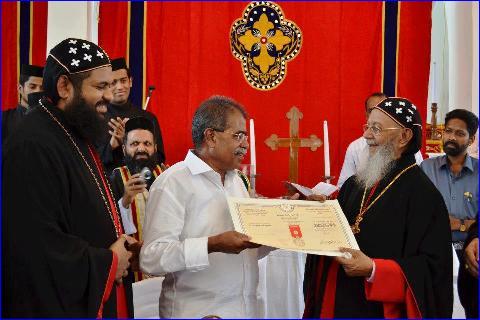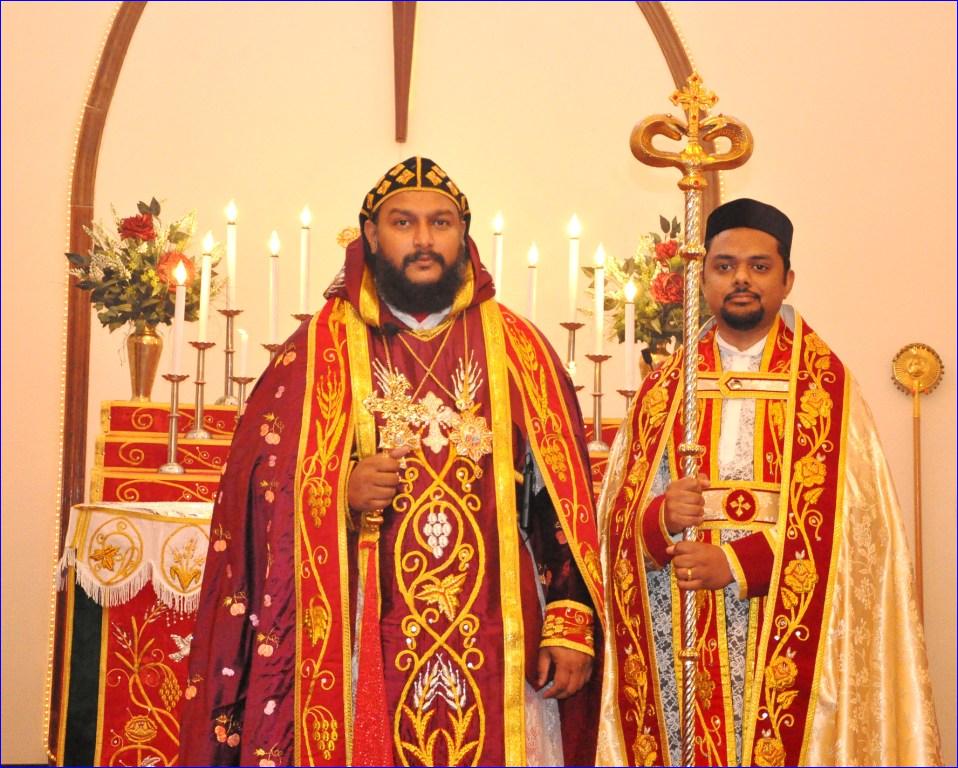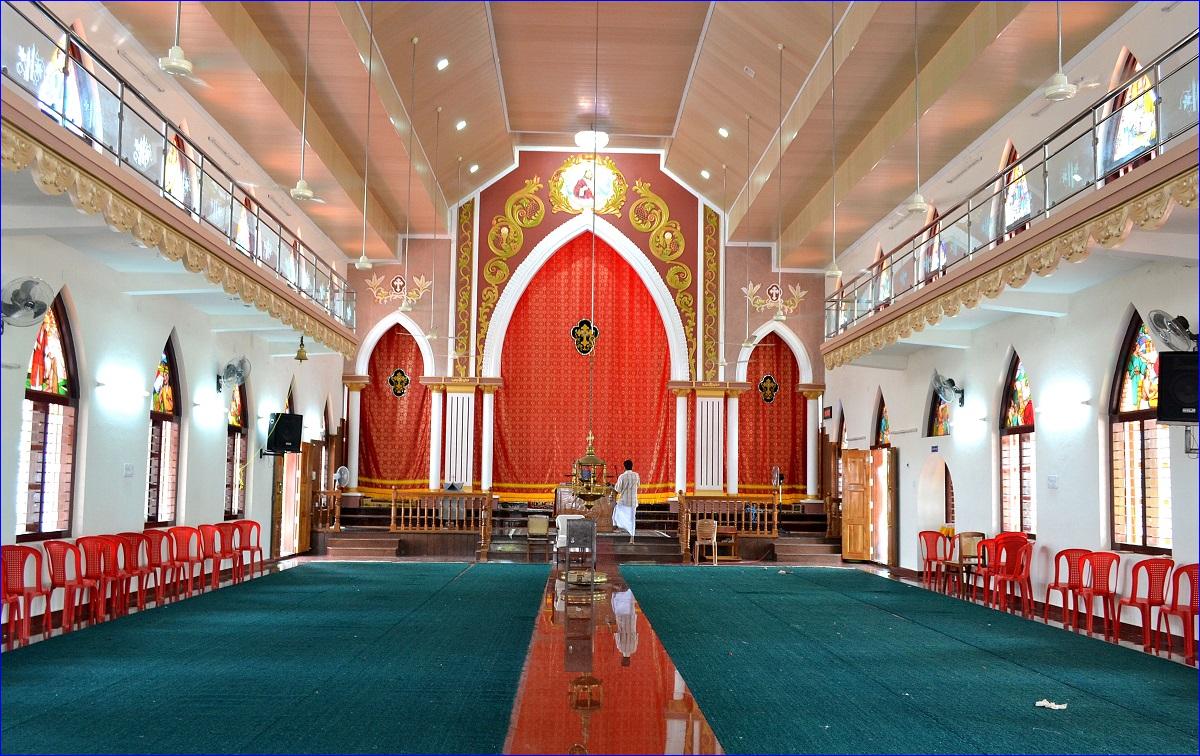


The days leading up to the service, I visited the Church's website and listened to the post-Communion hymns online. They followed a wholly Middle Eastern minor-chord melody, incredibly similar sounding to the chants uttered at Muslim services. I only know one Assyrian person and I haven't seen Passion of the Christ, so I had no clue what spoken Aramaic even sounded like. I had no idea in terms of the length of the service, if there would be any English (or translation), and how I would be received.
In fact the only thing I knew was that Assyrian (and more broadly Middle Eastern) Christians had long been persecuted by the Fatimids, Ottomans, Nationalist Baathist regimes (the Assads and Husseins in Syria and Iraq), Al-Qaeda and now ISIS. I went to the Assyrian People's rally in solidarity at the height of the crisis as Iraqi bastions of Christianity like Mosul were conquered, the light of their faith extinguished. I heard story after story of relatives who'd either before forced to become refugees (the lucky ones), disfigured or killed simply because of their religion. Particularly for Assyrians, Chicago had become home, a refuge where they were free to be Christians at last. I simply cannot imagine the strength of a community that has endured 1,300 years of persecution while remaining steadfast, and so I made the drive out to Villa Park.
Facing the Altar

I noticed the jumbo Casio keyboard on the far right side near the Iconostasis. It reminded me of a Hookah lounge I had gone to a decade ago that played live music as the world's worst belly dancer moved off beat. Anyways...a man wearing all white came up to the keyboard, playing minor chords while gradually raising the volume. Slowly the curtain opened revealing the altar with a heavenly sky blue painted behind it.
The Altar had multiple levels. Atop the first tier stood a Gold-sheathed Bible. Above that were some flowers (although I couldn't discern which type). On the final level was a golden, intricately designed cross. On the left and right off the cross what looked to be two large silver plates with heavy indentations along the outermost edge, reflecting light like two miniature suns. The scent of incense was heavy and the sound coming from the speakers became deafening. Without warning, the congregation stood, crossed themselves and began singing a hymn in Aramaic that had no melodic equivalent to anything I'd heard before.
Then, the Altar boys appeared, the Lector walked out, the Deacon followed, and finally the Priest walked in (Orthodox services require a lot of people). The Priest looked quickly at the congregation, did the sign off the Cross and then faced the Altar. The Deacon took down the large (also golden) container of incense which the Priest then blessed three times looping his hand through the chains holding it up while doing so. The Altar boys furiously shook two smaller versions of the plate like things on top of the altar which produced a noise akin to a rainmaker (like we made in Art class). Suddenly, the curtain shut. Parishioners continued to walk in, the count slowly rising to nearly 100.

The curtain reopened with the Priest still facing the Altar. Although similar to the Greek Orthodox Church in that there is (until the Sermon and Communion) very little interaction between the Priest and the congregation, there is more to occupy the senses through hymns, chants and icons. I had no sense for the rhythm and flow of the service, and tried in vain to find my place in the service by opening the Liturgical Book reading right to left, which was entirely in Aramaic and Arabic. Instead, I kept switching my focus between the altar and the couple in front of me, trying to follow their motions and get cues to the service. Within the hymns I noticed the slight linguistic differences between Arabic and Aramaic, realizing that the service was at the very least bi-lingual. The First Lesson, Second Lesson, and Gospel were the first parts of the service I understand, though sung in such heavily accented English I had to pay close attention.
The curtain once again shut with the keyboardist refocusing his hands on the black keys. After another five minutes, the curtain reopened with the Priest kneeling before the Altar. After a series of crosses, he arose to face the congregation. A torrent of Aramaic flowed from him, alternately compassionate and stern. After a pause, then a rush of Arabic (which I knew enough of to realize he was talking about the 4th Commandment, honoring the Sabbath). He switched over to English, speaking much more slowly, carefully reading from a prepared Sermon. I appreciated the Sermon, and the incredible level of difficulty to deliver a culturally relevant message in three languages.
The Priest implored of the necessity to attend church, the Sabbath evidence of God's great love for us. Indeed, what a merciful God that he provides us our Labor and the ability to rest in the communion of others. In his view, many of the current ills of the world would be cured if more people attended Church and abided by the Commandments. There is probably some truth to them, however I always kind of looked at them as a behavioral guide, especially since I didn't know anyone with a man-servant. Following the sermon, everyone shared the peace by pressing both palms together with their neighbor, soundlessly and without greeting. Clearly, there was much that I didn't understand of this liturgy.
The Orthodox Church continually builds in intensity until the Holy Communion. Communion is the reason for the service, and as such, its highlight. Following chants, hymns, much incense and sound, the Words of Institution were delivered in three languages. The pews emptied as the faithful jumped into the center aisle to receive the bread and the wine. Immediately after partaking, the women removed their veil as they returned to their seats.

Like the Greek Orthodox service, the Syriac Orthodox faith concludes worship with a piece of bread (available for all, regardless of whether one takes communion). Being in the last pew, I was the last to receive bread. The Priest took a quick glance over me, then motioned to another man (who turned out be his son) to come over. I explained I was a blogger with Chicago Now, and that I was there to write a blog on their faith and on the service. I was invited to join everyone in the fellowship hall below.
Come Again
I learned the Church was formerly Baptist and that it had been retrofitted to accommodate the Orthodox Faith in the Mid-1990's. The Priest had come to the Chicago area from Iraq and given the diversity of his flock, the tri-lingual services were an absolute necessity. The Priest's native Iraq was primarily Aramaic speaking (especially among older congregants). The Syrian Christians and handful of Palestinians spoke Arabic. The English was provided for the benefit of younger parishioners who had either been born in the US or emigrated while young, for whom the languages of the homeland were of secondary importance.
The Priest had a busy day ahead of him. Soon after the worship service, he would preside over a Syrian wedding (it was mostly Iraqis at the worship service), and finish the day with an Iraqi funeral. He appeared willing to talk but was so self-conscious using English that he quickly directed me to a church elder, a Syrian man who had lived in the region for nearly 40 years. He gave some background of the Church and that it had grown in order to accommodate the steadily building flow of refugees fleeing religious oppression. As a primarily ethnic institution, preserving cultural traditions was an essential function of the Church.
As I had experienced with the Greek Orthodox Church, there was an outwardly warm and welcoming message, with a more guarded inner-demeanor. This is entirely understandable in a Church that has faced external pressures from non-Orthodox Christians and Muslims for most of its history. I received a room full of interested glances, however few people came to greet me. Those who did made sure I had a full cup of coffee, a piping cup of tea and plenty of off-brand cookies. I was told to come back, and I fully expect that a real effort to understand and join the Church would be heartily welcomed. I intend on coming back in 2015, wondering what I'll pick up with a second impression.
As I've now attended services / events within Catholic, Protestant, and Orthodox Christianity, Islam, and Buddhism (Zen and Shin), I have greatly broadened my religious horizons. It is fascinating to see which faiths are more insular, and which are more evangelical (actively encouraging visitors). From what I have seen, the Buddhist faith (at least Zen and Shin) attracts many seekers and gears its message towards potential joiners. There is ample explanation provided so that even the most novice (such as myself) can readily participate. The Lutheran Church (and many other Protestant denominations) also explicitly welcomes visitors during the service, however there is the general expectation that one is already familiar with Christian religious traditions and conventions.
Conversely, the Orthodox faith is more inward learning, with emphasis placed on preserving shared linguistic, historical and cultural traditions. In this way, it appears similar to Judaism in that not just anyone can join. There has to be a true demonstration of commitment, and a willingness to fully embrace the language and culture of the church. Participation within the 7 Holy Mysteries or Sacraments has to be earned. To me, there is almost something akin to nationalism present in Orthodox Churches that has no comparison within Protestant faiths. I can appreciate both approaches, but I don't know yet which tactic I favor.
Orthodox Away
I will be attending a service at St. James Armenian Church in Evanston later in November. Alongside the Assyrians, the Armenian Church is one of the most ancient and enduring. Like the Assyrians, they have been frequently surrounded by enemies, even from the co-Orthodox Georgians and Russians. From my study of history, the Armenians occupied a very similar position within the Ottoman Empire as the Jews, a primary merchant / business class that established outposts throughout Balkan Europe and the Near East. Until 1991 the Armenians had never enjoyed independence in the modern era. I am curious to see the connection to their homeland, and if their faith has enjoyed a resurgence since the end of Communism.

or register to post a comment.